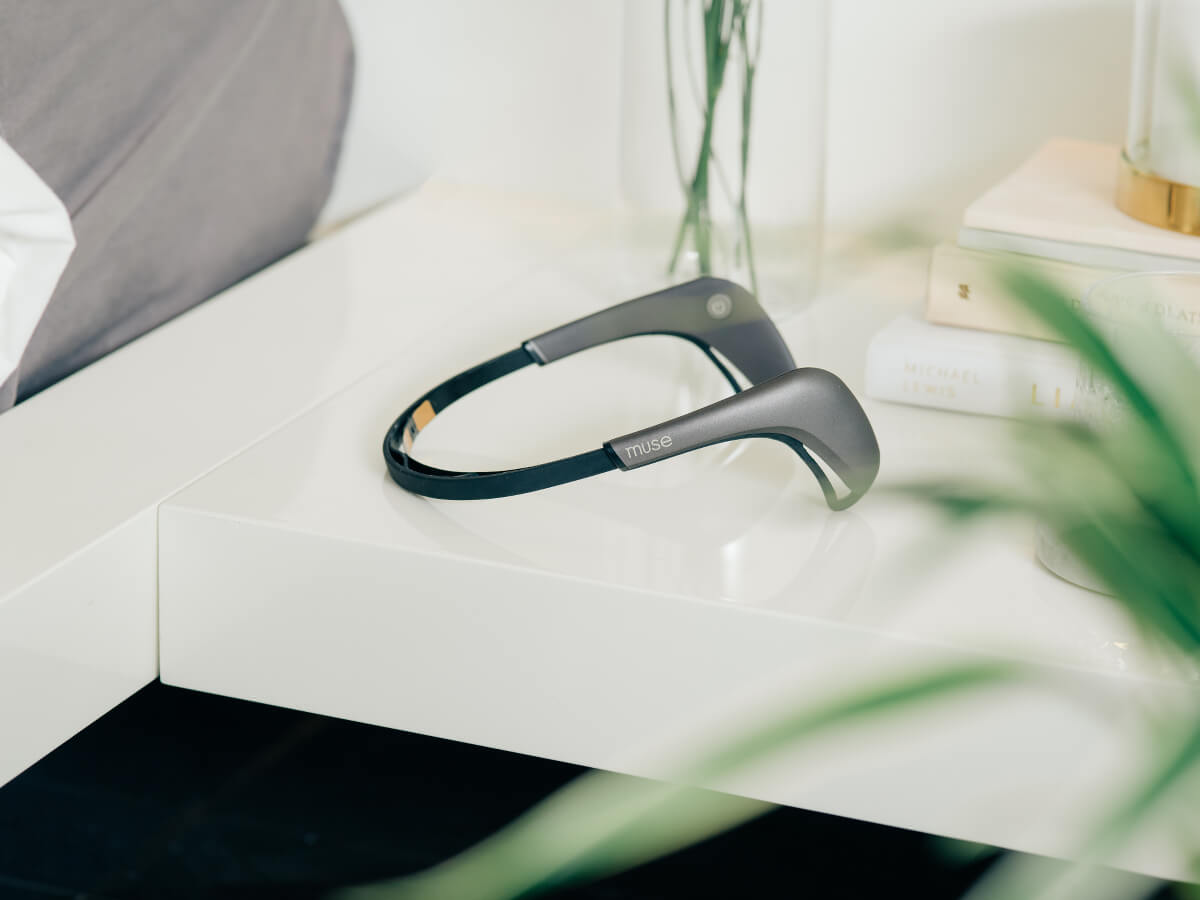InteraXon, the creators of the brain-sensing meditation headband, has released the second edition of its product four years after first launching Muse.
The Muse 2 is still focused on meditation but also includes sensing capabilities for brain activity, heart rate, and breathing patterns. Through the device, users can learn how to pace breathing and minimize fidgeting while meditating, and track progress through a mobile app.
In comparison, the original Muse provided audio feedback (e.g., a thunderstorm) when users were getting off-track based on readings from EEG sensors. Co-founder and CTO Chris Aimone said the company wanted to create a more holistic experience with this edition that takes into account the various elements that impact meditation. The hope is to have fewer people hit a roadblock that leads them to abandon the product and their meditation practice.
“There’s no way to do this effectively without doing hardware and software and data as an integrated platform.”
“The issue with brain-based meditation is if you have difficulty calming your mind, getting started can be really difficult because your mind is busy and you don’t know what to do to calm it down. You get feedback, but it’s like ‘I can’t calm the rain down’,” said Aimone. “The challenge people have is without the awareness of how all the different dimensions of your inner universe affect the mind, you don’t really know how to start working with it.”
In July 2018, the company acquired Colorado-based Meditation Studio, which provides guided meditation courses from experts like yoga instructors, psychologists, and Zen monks. While those courses haven’t yet been integrated into the new edition of the Muse, Aimone said it would work on integrating the courses within the platform by January 2019.
The company’s primary customer base includes selling directly to consumers and clinicians, with the latter using the product to help patients. Muse’s website also features Muse Connect, which includes a dashboard for clinicians to help them track a patient’s meditation progress and access best practices.

Currently, InteraXon said Muse is being used by researchers at the University of Toronto, Mayo Clinic, NASA, and Harvard University. Graeme Moffat, chief scientist and VP of regulatory affairs, said organizations like NASA are using Muse to help people understand when they might make a mistake, as a compromised cognitive state can affect performance.
This product release comes as another Canadian wearables darling has released its second product. Thalmic, which launched in 2012 with the Myo armband, ceased selling the wearable, rebranding to North with a new focus on smart glasses. InteraXon, instead, has doubled down on its Muse product.
“Nobody’s ever made a low-cost brain-sensing device that’s been successful in the consumer market – this is the first one,” said Moffat. “It’s growing at an accelerating rate. People have a reason to put a brain scanner on their head, it gives them something back. The hardware is an essential component and that’s a competitive advantage, we’re good at everything to do with hardware and brain sensing and the data science, but there’s no way to do this effectively without doing hardware and software and data as an integrated platform.”
The relaunched product comes just under a year after InteraXon raised $11.6 million USD in a Series B extension round (the company previously last closed a Series B of $10 million in May 2015). Asked by BetaKit how the company is thinking about how to get to the next level, Aimone said the company has undergone a “pattern of growth.”
“If you think about personal growth and change, there’s are some things that move very slowly until you find the breakthrough point. We know we want to make meditation fun and enjoyable to start learning, that was the threshold we wanted to break through,” Aimone said. “We know we’re winning with some people, but we want to feel like we can actually get to downpour.”
The device is retailing for $299 CAD starting today.


